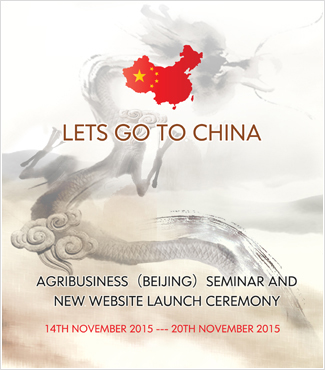Quick Guide: Agriculture and Processed Foods Outcomes
Author:News Creat time:2015-09-30 11:40
China is Australia’s largest agriculture and fisheries export market, worth $8 billion in 2014, up from $5 billion in 2011.
ChAFTA delivers to Australia significantly improved market access for agriculture and processed foods, on par or better access to China than any other FTA partner.
Key outcomes include:
Beef: tariffs (currently ranging from 12-25 per cent) will be eliminated within 9 years of entry into force.
Dairy: all tariffs on Australian dairy products (up to 20 per cent) will be eliminated within 4 to 11 years. This includes rapid elimination of the 15 per cent tariff on infant formula and the 10-19 per cent tariff on ice cream, lactose and casein, both within 4 years.
Sheep and goat meat: tariffs on all sheep and goat meat (ranging from 12-23 per cent) will be eliminated within 8 years.
Pork: all pork tariffs (up to 20 per cent) will be eliminated within 4 years
Hides and Skins: tariffs of 5 to 14 per cent on hides and skins including, sheepskin, cowhide and kangaroo hides and skins, will be eliminated within 2 to 7 years.
Wine and Spirits: tariffs of 14 and 20 per cent on wine and tariffs up to 65 per cent on alcoholic beverages and spirits will be eliminated within 4 years.
Horticulture: tariffs on all fruit, vegetables and nuts, ranging up to 30 per cent, will be eliminated, most within 4 years.
Barley and Sorghum: the 3 per cent tariff on barley and 2 per cent tariff on sorghum will be eliminated on entry into force
Seafood: tariffs on all seafood exports will be eliminated within 4 years. This includes elimination of the 14 and 15 per cent tariffs on fresh abalone and rock lobster, respectively, within 4 years.
Processed foods: tariffs will be eliminated across a range of processed foods, including fruit juices and honey.
Wool: Australia will receive an Australia-only duty-free quota of 30,000 tonnes clean wool, which will grow by 5 per cent each year to 44,324 tonnes (clean) in 2024. This is offered in addition to the 287,000 tonne existing WTO wool quota already extensively accessed by Australia (which imposes a tariff of 1 per cent).
ChAFTA delivers to Australia significantly improved market access for agriculture and processed foods, on par or better access to China than any other FTA partner.
Key outcomes include:
Beef: tariffs (currently ranging from 12-25 per cent) will be eliminated within 9 years of entry into force.
Dairy: all tariffs on Australian dairy products (up to 20 per cent) will be eliminated within 4 to 11 years. This includes rapid elimination of the 15 per cent tariff on infant formula and the 10-19 per cent tariff on ice cream, lactose and casein, both within 4 years.
Sheep and goat meat: tariffs on all sheep and goat meat (ranging from 12-23 per cent) will be eliminated within 8 years.
Pork: all pork tariffs (up to 20 per cent) will be eliminated within 4 years
Hides and Skins: tariffs of 5 to 14 per cent on hides and skins including, sheepskin, cowhide and kangaroo hides and skins, will be eliminated within 2 to 7 years.
Wine and Spirits: tariffs of 14 and 20 per cent on wine and tariffs up to 65 per cent on alcoholic beverages and spirits will be eliminated within 4 years.
Horticulture: tariffs on all fruit, vegetables and nuts, ranging up to 30 per cent, will be eliminated, most within 4 years.
Barley and Sorghum: the 3 per cent tariff on barley and 2 per cent tariff on sorghum will be eliminated on entry into force
Seafood: tariffs on all seafood exports will be eliminated within 4 years. This includes elimination of the 14 and 15 per cent tariffs on fresh abalone and rock lobster, respectively, within 4 years.
Processed foods: tariffs will be eliminated across a range of processed foods, including fruit juices and honey.
Wool: Australia will receive an Australia-only duty-free quota of 30,000 tonnes clean wool, which will grow by 5 per cent each year to 44,324 tonnes (clean) in 2024. This is offered in addition to the 287,000 tonne existing WTO wool quota already extensively accessed by Australia (which imposes a tariff of 1 per cent).
More detail on the agriculture and processed food outcomes can be found in the detailed fact sheet on Agriculture and processed foods, or in the full text of the China-Australia Free Trade Agreement.
(Reource:Australian Government Department of Foreign Affairs and Trade http://dfat.gov.au/)
